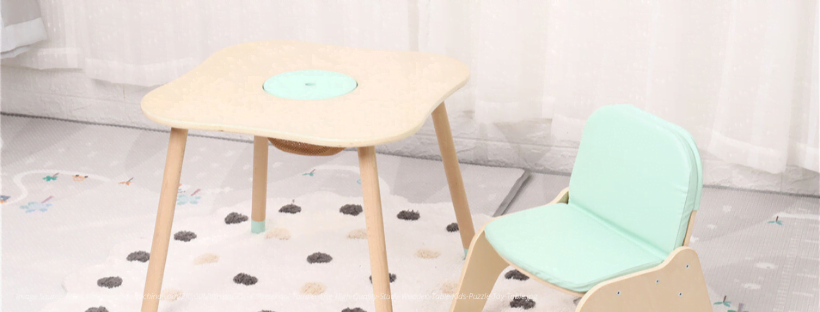Homeschooling goes way back to the 1960s. However, it was only in 1993 when all 50 States acknowledged the right of parents to homeschool their kids. With this development, homeschooling has become more popular. According to the National Center for Education Statistics, homeschooled children in the United States increased from 850,000 in 1999 to 1.7 million in 2016.
Parents opt to homeschool their children for various reasons. In a 2012 report from the United States Department of Education, the top reasons for parents for homeschooling their kids were:
- “concerns about the school environment”
- “dissatisfaction with academic instruction”
The report also revealed that some parents homeschool for the following reasons:
- to teach religion and morals,
- to teach in a non-traditional way,
- to manage children with special needs much better,
- have more family time, and,
- due to financial matters.
In homeschooling, there are various approaches to providing education. Some of them are Traditional, Montessori, Charlotte Mason, Waldorf, and Unschooling.
Nonetheless, while there are different methods of homeschooling, the best approach is the one aligned with your goals for your child and as a family. For example, if the homeschool setup is just temporary, and you will enroll your child in a traditional school eventually, then a traditional style of homeschooling might be the best choice.
Providing a Dedicated Space Conducive to Learning
Whatever your reason or approach for homeschooling is, one thing that will always be crucial to homeschooling is your children’s homeschool room. After all, it is where most of their learning will take place. Ideally, a homeschool room is a space with less noise and distractions, so your kids can concentrate much better on their studies.
If you are thinking of homeschooling your kids or you want a new look for your existing homeschool room, below are some general, valuable tips in setting up your children’s dedicated study space:
Color.

According to a 2015 article from Psychology Today by Dr. Sally Augustin, a person’s emotional response to color has to do with the color’s brightness and saturation. The former refers to how light a color is, whereas the latter refers to how pure the color is. Less saturated but bright is relaxing, whereas less bright but more saturated is energizing. Other insights about colors from the same article are as follows:
- People feel warmer in spaces painted with warm colors than cool colors.
- Walls painted with light colors make the wall seem farther than its actual position. On the other hand, walls painted with dark colors make the wall seem closer than its actual position.
- The color green is linked to creative thinking.
- The color red is linked to weakening analytical reasoning.
This article by a Color Expert entitled Color Psychology: Child Behavior and Learning Through Colors also offers significant information on how colors affect a child’s ability to learn and memorize. Hopefully, these can help you make sound choices when choosing colors for the wall and other materials for your child’s homeschool room.
- Red, when combined with other colors, helps children work better on tasks done repetitively and requires attention to detail.
- Yellow is a child’s color for happiness! The article states that the color is fitting to use in a kid’s playroom, study room, and bedroom. Note, however, that excessive application of this color can make a child feel stressed.
- Orange improves memory and critical thinking.
- Pink is associated with calmness and helps reduce heart rate.
- Blue improves creativity. Generally, the color is also associated with coolness and calmness. However, too much of this color can invoke feelings of sorrow, so don’t overuse it.
- Green helps children relax and also improves their health.
It seems that all colors mentioned in the list above are good to use as long as they are not used excessively.
Light.

As much as possible, choose a room with lots of access to natural light. Natural light not only helps reduce utility bills but also provides health benefits! According to Healthline, some benefits of natural light are as follows:
- Improves vitamin D levels.
- Helps prevent mood swings during a seasonal depression.
- Encourages better sleep.
As you rely more on natural light and less on fluorescent light, you also lessen the health risks you may get from the latter such as stress, migraine, and eye strain.
The same article also provides tips on how you can improve access to natural light:
- Place mirrors where the ray of the sun is to help the light bounce and illuminate the room.
- Raise blinds during the day.
- Paint the room with reflective color. It doesn’t necessarily have to be white even though it’s the most reflective color among them all. You may choose colors close to white instead such as pastels.
- The article also warned that the color of the floor may be the biggest reason behind the darkness of the room. As a solution, cover the floor with a light-colored rug or carpet.
Furniture.

Help your children study better by removing worries about the physical environment of the homeschool room. One of the ways you can accomplish that is by investing in durable furniture that can stand the test of time and provide comfort! Some of the furniture vital to invest in are chairs, tables, and modular.
You might also want to consider buying a front-facing bookshelf instead of the usual bookcase if you want to make reading second-nature to your children. With a front-facing bookshelf, books are more visible to your kids, making them more appealing to pick and read.
Order.

Make sure that there’s a place for everything in your homeschool room. Seriously, take note of the word everything. Don’t underestimate how one or two items can mess up the entire room easily if they don’t have a place in it. So, organize all your items, place them in containers or cabinets, and label them properly. This way, you are not only maintaining the room’s order but also empowering your children to get the items they need independently. It also allows you to instill in them the discipline of putting things back where they belong.
You can also use the space on the walls for some items such as diagrams, educational posters, and your child’s artworks. Of course, anything in excess is not good. If there is too much going on in the wall, it can be distracting and may take away from your child’s study time. The key is finding the right balance that will maintain your homeschool room’s good atmosphere for learning.
Comfort.

Who would be comfortable and excited to study in a messy and dirty room? As much as you can, keep the homeschool room neat and tidy at all times. An organized homeschool room can go a long way in helping your kids concentrate on their studies.
Finally, ask your kids for input and feedback about the look of their dedicated space. After all, it is their room! They might have some ideas in mind to improve the room’s conditions and to make it more comfortable for them with their personal touch.
Managing Remote Work and Kids

Having a hard time homeschooling and managing your remote work at the same time? Sometimes, no matter how many adjustments you make to your schedule to ensure that you fulfill all your responsibilities, you may still find yourself unable to finish everything. Even some full-time, non-working parents already experience trouble managing all their responsibilities. Moreover, the anxiety and stress brought about by the pandemic make things even tougher right now. Juggling everything alone may cause your mental and physical health to deteriorate. It can make you suffer from stress, anxiety, sleep deprivation, and burnout.
News flash: you don’t need to do everything alone! There is support available if only you ask for it. You can be a part of a community of homeschooling parents that can provide you with tips. You may also get an online personal assistant or virtual assistant who can take care of minor tasks for you.
When you delegate tasks to a virtual assistant, you can free up time, reduce your stress levels, improve your efficiency and productivity both as a remote professional and as a parent. Some of the tasks an online personal assistant can help you with are as follows:
- Find and order the best-priced learning materials and resources.
- Help you create a schedule that works for you and your kids.
- Weekly meal planning.
- Recommending fun, family activities.
- Time-consuming research on anything and everything under the sun.
Getting Virtual Assistant Services

A virtual assistant is an independent contractor that provides support to clients by taking care of their non-core responsibilities from a remote area. This means that all work that a virtual assistant does is non-physical and made possible through the use of the Internet. Indeed, the profession is one of the amazing results of advancements in technology.
During the fledgling days of the Virtual Assistant industry, clients seek virtual assistant services for administrative functions alone. Over the years, clients began to rely on them for tasks that require more mental effort as well. While clients may still find virtual assistants who are experts in clerical responsibilities, they may also find virtual assistants who are experts in higher-level tasks such as copywriting, content writing, and web development. Some virtual assistants specialize in a particular task and some specialize in a task for a specific industry. Say, for example, there’s a virtual assistant experienced in content writing for a real estate company. Indeed, virtual assistants have a lot more to offer these days, making parents and professionals interested in hiring one as well, apart from business owners.
One of the main reasons people hire a virtual assistant over an in-house assistant is cost. As virtual assistants work offsite, clients can reduce overhead expenses. They no longer need to worry about the space, work station, chairs, computers, and other equipment that the virtual assistant may need. Since virtual assistants are independent contractors, they are responsible for ensuring continuous, uninterrupted work and meet the client’s standard for work output.
When you get virtual assistant services from a reliable virtual assistant service provider such as OkayRelax, you can remove a mountain-load of worries off your chest and have more time to focus on the essentials.
